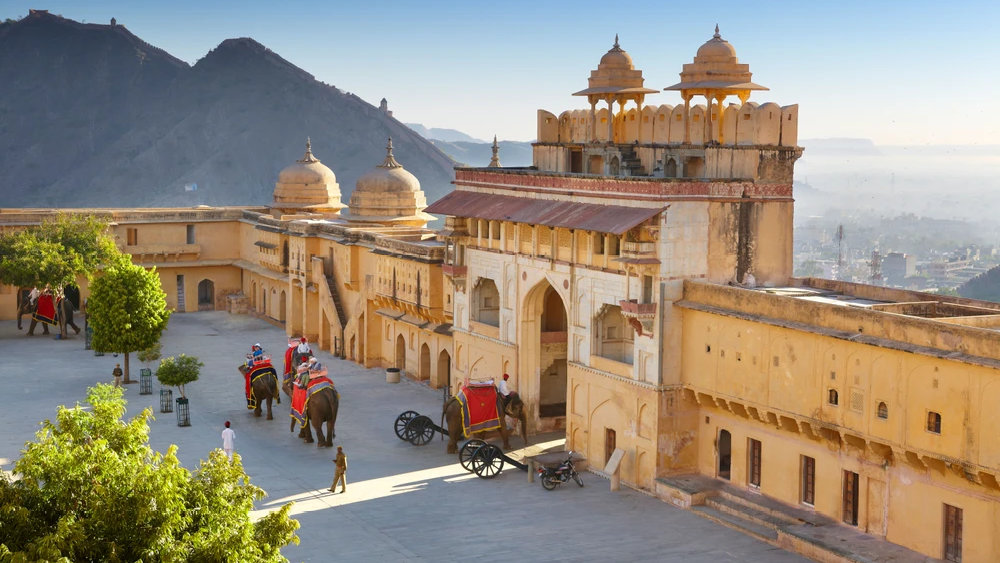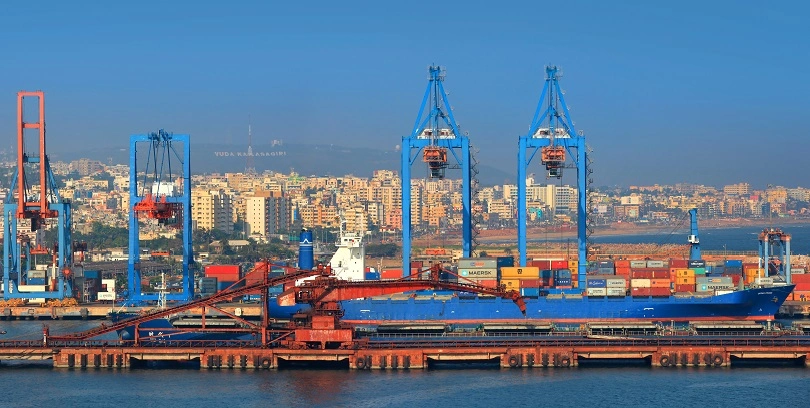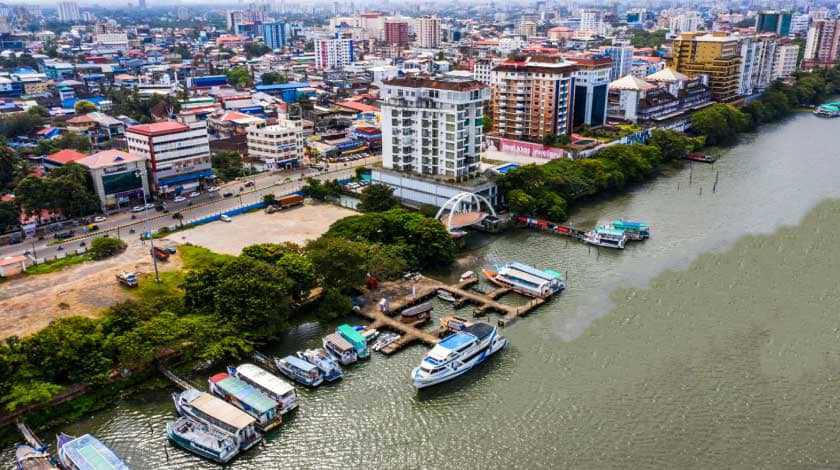Introduction
India is one of the fastest growing economies in the world, aspiring to become a US $40 trillion by 2047, when India marks 100 years since its independence. In this growth story, Indian cities will play a great role. Cities in India occupy just 3.0% of the nation’s land, but their contribution to GDP is a massive 60.0%. As India transitions from being a largely rural to an urban society, the focus needs to be on harnessing the economic potential of all cities, large and small. For this, there is a need to not only nurture megacities and their hinterlands as centres of economic growth, but also facilitate tier 2 and 3 cities to take on the mantle in the future.
How do we classify cities within India?
Indian cities are diverse and complex, and categorizing them requires considering various factors like population, economic activity, infrastructure, and administrative importance.
- However, there's no single "official" classification system. Different organizations use various criteria and methodologies, leading to a multitude of lists and categories.
- One widely accepted classification is based on population data from the 2011 census, published by the Reserve Bank of India (RBI).
- This system categorizes cities into six tiers based on population size. It aligns with the general understanding of city sizes and growth stages.
Box 1.1 Classification of cities based on population
|
Why Tier 2 and 3 cities are emerging in recent times?
The rise of tier 2 and 3 cities in India can be attributed to a combination of factors pushing people and businesses out of tier 1 cities and pulling them towards smaller cities.
Push factors from tier 1 cities
- Saturation and Competition: As tier 1 cities become more crowded, opportunities for employment, business growth, and social mobility become saturated. As a result, people and businesses are moving to smaller cities seeking better quality of life and opportunities.
- High Cost of Living: Tier 1 cities are often associated with a high cost of living, including expensive housing rents, transportation, and daily expenses. This can push individuals and businesses to seek more affordable alternatives in tier 2 and 3 cities.
- Environmental Unsustainability: Tier 1 cities often face challenges related to environmental sustainability, including air and water pollution, waste management issues, and depletion of natural resources.
- For example, a 2022 World Air Quality Report, ranked Delhi fourth on a list of 50 of the world’s most polluted cities in terms of PM2.5 levels. Whereas tier 2&3 cities like Indore and Surat have ranked as cleanest cities of India.
- Crime and Public Safety: Tier 1 cities may have higher crime rates and lower levels of public safety compared to tier 2 and 3 cities.
- A 2022 NCRB report ranked Delhi among India's most crime-infested cities against the women.
Pull Factors from Tier 2 and 3 cities
- Availability of talent pool: Tier 2 and 3 cities are increasingly becoming attractive due to the availability of a skilled and educated workforce.
- According to a NASSCOM report, up to 15% of India's tech talent resides in tier-2 and tier-3 cities.
- The Rising Middle Class: The increasing affluence and purchasing power of the middle class in tier 2 and tier 3 cities is driving demand for goods and services, leading to increased market potential.
- Infrastructure Development: Tier 2 and 3 cities are experiencing significant infrastructure development, including improved transportation networks, modernized utilities, and better connectivity.
- Government efforts like UDAN scheme for regional air connectivity has enhanced attractiveness of these cities.
- Accelerated Digital Transformation: Tier 2 and 3 cities are investing in digital infrastructure, including high-speed internet connectivity, digital payment systems, and e-governance initiatives, making them more attractive for businesses.
- According to a survey by , 50% of online shoppers are located in small cities contributing significantly to the growth of e-commerce in such cities.
- Location Advantages: Tier 2 and 3 cities have several industrial clusters, are situated in business-friendly states, and are well-connected to other major economic hubs.
- For example, 83 of 242 Special Economic Zones (SEZs) and 15 of 60 Software Technology Parks of India (STPI) centres in India are located in these emerging hubs (Deloitte Report).
- COVID Impact: The pandemic-induced remote work culture has accelerated a trend of reverse migration to tier 2 and tier 3 cities. Also, Tier 2 and Tier 3 cities, offered new opportunities to companies who wanted to diversify their location of operations.
- Rise of Gig economy: Lower operational costs, including land and labor, coupled with a large and stable talent pool, make these cities an attractive expansion destinations for IT companies.
- Reports have also highlighted an upsurge in the participation of women from tier-2 cities in the gig economy.
- Emerging as promising hubs for warehousing investments: One of the key drivers of this trend is the implementation of the Goods and Services Tax (GST). This has streamlined logistics operations and reduced transit times, making it more efficient and cost-effective to set up warehousing facilities in smaller cities.
- Cultural and Social Opportunities: Tier 2 and 3 cities often offer a rich cultural and social environment, with vibrant local communities, festivals, and traditions. This is attracting individuals and families looking for a more inclusive and community-oriented lifestyle.
Box 2.1: Flourishing Start-up ecosystem in Tier 2 and 3 cities
Start-ups and entrepreneurship are no longer restricted to metro cities in the present times. Approximately 50% of the recognised start-ups in India are based out of Tier 2 and Tier 3 cities.
Apart from the above discussed favourable factors like the lost cost of living , availability of skilled and unskilled talent pool, digital advancements, infrastructure development and rising middle class offering untapped market, some other key factors also support the growth of start-ups in smaller cities. These include:
Success Stories:
|
What are the prevailing challenges associated with Tier 2 and Tier 3 cities?
Tier 2 and Tier 3 cities in India, while burgeoning as centres of growth and culture, grapple with a spectrum of challenges that impede their full potential. These include:
- Lack of Quality Infrastructure:
- Inadequate basic infrastructure: Poor quality roads, unreliable power supply, insufficient water and sanitation facilities, limited public transportation systems.
- Lack of high quality digital infrastructure: Absence of high-speed internet hinders digital connectivity and restricts opportunities for emerging digital technologies like Internet of things(IoT) for businesses and citizens.
- Outdated urban planning: Unplanned urban expansion in Tier 2 and Tier 3 cities leads to inefficient land use, inadequate drainage systems, and lack of green spaces.
- Economy and employment:
- Limited job opportunities: Primarily focused on traditional industries, limited presence of large companies and MNCs, lack of adequate skills limits diversification of jobs.
- Prevalence of unemployment and underemployment: Skilled workforce still often migrates to larger cities, leaving behind skill gaps and limited income opportunities.
- Dominance of Informal sector: Large informal sector poses challenges in terms of tax collection, regulation, and worker benefits.
- Healthcare and education:
- Inadequate healthcare facilities and shortage of qualified medical professionals: Limited access to specialized care, high patient-doctor ratio, poor infrastructure in hospitals and clinics.
- Deficiencies in education system: Lack of quality schools and colleges, limited access to higher education, high dropout rates, inadequate teacher training.
- Digital divide: Limited Digital Literacy along with Regional Language Barrier hinders online learning and educational opportunities.
- Environmental and Social issues:
- High Pollution Levels: Several of India’s Tier II and Tier III cities figure among the most polluted. Not only is air pollution severe in smaller cities but their air quality monitoring systems are poor too.
- Poor sanitation and waste management: Leads to health problems, pollution, and environmental degradation.
- Gender inequality and social discrimination: Presence of traditional communities, patriarchal mindset hinders women's empowerment and restricts development opportunities for certain communities.
- Governance and administration:
- Limited financial resources: Local governments often lack sufficient funds for infrastructure development and service delivery.
- Weak institutional capacity: Inadequate manpower, skills, and expertise to effectively manage urban development and address challenges.
- Lack of citizen participation: Limited involvement of citizens in decision-making processes, hampering transparency and accountability.
Box 3.1: Local Self-Government's Role in Ensuring Environmental Sustainability in Tier 2 & 3 Cities Tier 2 and 3 cities are experiencing rapid growth, bringing opportunities but also posing environmental challenges. Local self-governments (LSGs) hold the key to steering these cities towards a sustainable future.
By implementing these above strategies, LSGs can empower communities, secure resources, and ensure Tier 2 and 3 cities become healthier, cleaner, and more liveable for generations to come. |
How does fostering development in Tier 2 and Tier 3 cities aid in achieving national development objectives?
The development of Tier 2 and Tier 3 cities in India contributes significantly to national development in various ways:
- Bridging Regional Disparities: Developing Tier 2 and 3 cities can lead to more balanced regional development, reducing the concentration of economic activities in Tier 1 cities.
- Reducing unemployment and underemployment: Better development of Tier 2 and 3 cities can create more employment opportunities in sectors such as manufacturing, services, and IT.
- Improving Living Standards: Improving infrastructure, healthcare, education, and other amenities in Tier 2 and 3 cities can enhance the quality of life for residents and improve overall well-being.
- Boost to Local Economy: Developing Tier 2 and 3 cities can boost the local economy by creating new employment opportunities, fostering entrepreneurship, and attracting investments thereby facilitating the achievement of the ultimate goal of Atmanirbhar Bharat.
- Achieving SDG 11: Developing Tier 2 and 3 cities in a sustainable manner aligns with Sustainable Development Goal 11, which aims to make cities and human settlements inclusive, safe, resilient, and sustainable.
- This can involve improving urban planning, reducing environmental impact, enhancing disaster resilience, and ensuring access to basic services for all residents.
- National and Global Integration: Improving connectivity and accessibility in Tier 2 and 3 cities can facilitate trade, investment, and tourism. This can help these cities become more integrated into the national and global economy.
- Promotion of Innovation and Entrepreneurship: Better development of Tier 2 and 3 cities can create an environment conducive to innovation and entrepreneurship. This can lead to the emergence of new businesses and industries, contributing to economic growth.
- Balanced urbanization: Developing Tier 2 and 3 cities can reverse the trend of migration to Tier 1 cities by creating opportunities in home cities. This can reduce the strain on infrastructure and resources in Tier 1 cities.
What initiatives have been taken by the Government to foster growth in tier 2 and 3 cities?
Table 5.1. Government initiatives to foster growth in Tier 2 and 3 cities | |
Development of Infrastructure | |
| Urban Infrastructure Development Fund (UIDF) |
|
| Metro Rail Policy 2017 |
|
| PM Gati Shakti |
|
| UDAN (Ude Desh Ka Aam Nagrik), Scheme, 2016 |
|
| Digital India |
|
Boost Local Manufacturing | |
| One District One Product Scheme (ODOP) |
|
Production Linked Incentive (PLI) Schemes
|
|
Make in India
|
|
Support to MSMEs | |
| Promoting Innovations in Individuals, Startups and MSMEs (PRISM) |
|
The Micro & Small Enterprises Cluster Development Programme (MSE-CDP) |
|
| Pradhan Mantri Formalization of Micro and Small Enterprises (PMFME) |
|
| Credit Guarantee Fund Trust for Micro and Small Enterprises (CGTMSE) |
|
Promote Sustainability | |
| Smart Cities Mission |
|
| Swachh Bharat Mission |
|
| Atal Mission for Rejuvenation and Urban Transformation (AMRUT) |
|
Support to Startups | |
| Startup India |
|
| NewGen Innovation and Entrepreneurship Development Centre |
|
Tax Benefits for Recognized Startups
|
|
Table 5.2 Examples of Thriving Tier 2 and 3 Cities
|
What more can be done to stimulate progress and development in Tier 2 and Tier 3 cities?
Attracting investments in Tier 2 and Tier 3 cities involves a strategic and concerted effort from various stakeholders, including government bodies, local authorities, and the private sector. Here are some potential ways forward to foster growth and development in Tier 2 and Tier 3 cities:
- Public-Private Partnerships (PPPs): Foster collaboration between the government and private investors to fund and execute infrastructure projects.
- Sector-Specific Incentives: Provide targeted incentives for industries with growth potential in Tier 2 and Tier 3 cities.
- Investment Promotion Agencies: Create dedicated Investment Promotion Agencies to actively promote investment opportunities, assist investors, and facilitate the investment process.
- Skill Development and Education
- Collaboration with Educational Institutions: Work with universities and vocational training centers to tailor programs to the needs of local industries.
- Create Localized Content: To bridge the digital literacy gap and connect with a wider audience, digital marketers should consider creating content in regional languages.
- Digital Connectivity
- Improving Internet Infrastructure: Invest in digital infrastructure, including high-speed internet, to enhance connectivity and support digital businesses.
- Smart City Initiatives: Implement smart city projects that leverage technology to improve urban services.
- Financial Incentives
- Tax Breaks and Subsidies: Offer tax incentives and subsidies for businesses choosing to invest in Tier 2 and Tier 3 cities.
- Land Allotment: Streamline processes for land acquisition and provide accessible and affordable land for industrial and commercial purposes.
- Quality of Life Improvements
- Urban Development: Focus on creating livable cities with amenities such as parks, cultural facilities, and recreational areas.
- Affordable Housing: Facilitate the development of affordable housing projects to accommodate the growing population.
- Sustainable Practices: Implement sustainable and eco-friendly practices and encourage the adoption of renewable energy sources.
- Marketing and Branding
- City Branding: Develop and execute effective marketing campaigns to position the city as an attractive and dynamic business destination.
- Local Government Engagement: Engage local government officials in promoting the city as an investment destination
- Investor Outreach Programs: Actively reach out to potential investors through targeted marketing efforts, roadshows, and international trade missions.
Conclusion
Fostering growth and development in Tier 2 and 3 cities is vital for India's journey toward becoming a developed country. By focusing on infrastructure, industries, education, and sustainability, these cities can play a pivotal role in driving economic growth, creating jobs, and improving living standards for millions of people.
- Tags :
- Economy, Tier 2 cities, Tier 3 Cities, Indian Economy, Development









